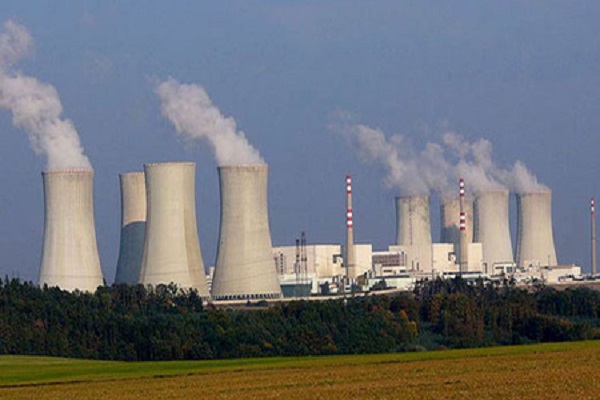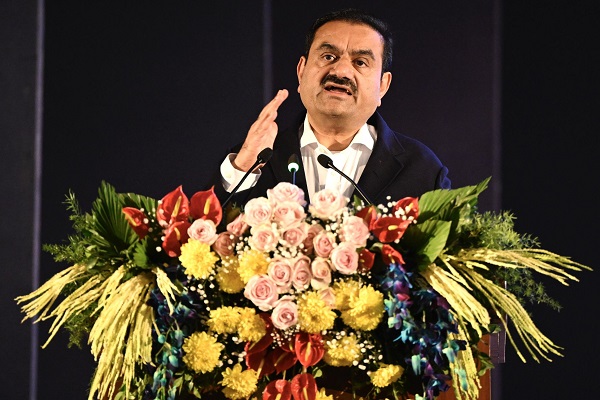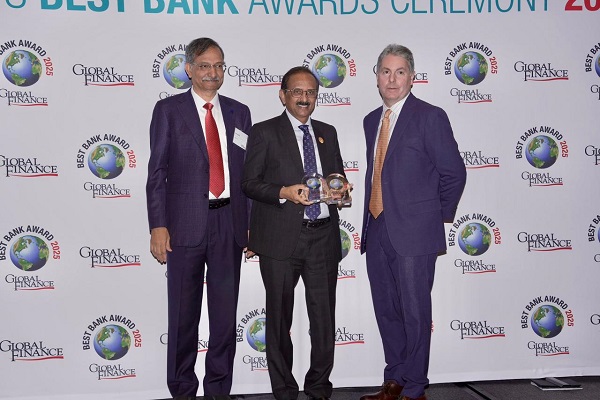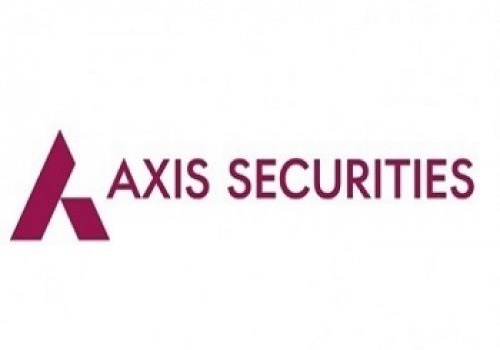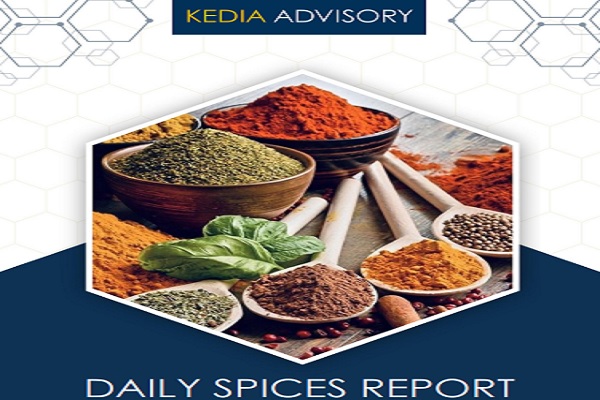Naturalgas trading range for the day is 297.6-323.8 - Kedia Advisory

Gold
Gold prices advanced by 0.8% to settle at Rs.93,647, buoyed by a weaker U.S. dollar and fading optimism surrounding recent U.S.-China tariff truce announcements. Although both nations agreed on tariff reductions for the next three months—U.S. tariffs dropping from 145% to 30% and China's from 125% to 10%—market sentiment remained cautious. Citi revised its short-term gold outlook, forecasting a consolidation range of $3,000–$3,300 and trimming its 0-to-3 month target to $3,150, reflecting expectations of eased trade tensions. In physical markets, mixed demand trends were observed. Indian dealers initially offered gold at discounts up to $24/oz amid weak demand due to a stronger rupee raising local prices. However, improved interest saw premiums return, with a $3/oz markup later in the week. In contrast, Chinese demand surged post-holiday, with premiums rising to $42–$49/oz. In Japan and Singapore, trading was mostly at par or at modest premiums, while Hong Kong saw similar activity. On the supply side, gold stocks in COMEX experienced the largest daily outflow since April, with 925,559 troy ounces (28.8 tons) worth $3.1 billion leaving warehouses. Meanwhile, London vault holdings rose by 0.6% in April as metal returned from New York. Technically, the market is under short covering with open interest falling 3.18% to 12,407. Immediate support lies at Rs.92,950, below which prices may test Rs.92,260, while resistance is seen at Rs.94,255, with a potential rally toward Rs.94,870 if surpassed.
Trading Ideas:
* Gold trading range for the day is 92260-94870.
* Gold regains some ground as dollar eases, trade optimism fades
* U.S. and China announced tariff reductions for the next three months
* U.S. tariffs on Chinese imports dropping from 145% to 30% and Chinese duties on U.S. imports falling to 10% from 125%.
Silver
Silver prices rose sharply by 1.49% to settle at Rs.96,767 amid fading optimism over the recent U.S.-China trade agreement and broader market caution. The temporary 90-day truce, which saw the U.S. and China agreeing to reduce tariffs to 30% and 10% respectively, initially boosted sentiment but has since been met with uncertainty over future trade policies. Despite the short-term nature of the deal, it bolstered silver’s longer-term outlook, particularly due to its critical role in industrial applications—especially within the green energy sector, where both nations are key players. The dollar index weakened after U.S. inflation data came in below expectations. Consumer price inflation eased to 2.3% in April, its lowest since February 2021, suggesting minimal immediate inflationary pressures from recent tariffs. From a fundamentals perspective, the silver market is poised for a fifth consecutive annual deficit in 2025. Industrial demand remains robust, forecasted to exceed 700 million ounces for the first time, driven by structural growth in green technologies. Physical investment is also expected to rise by 3%, with stronger demand in Europe and North America, even as jewelry and silverware consumption weakens—especially in India, where elevated local prices are curbing interest. Technically, silver is under short covering, with open interest dropping 0.72% to 16,943 while prices climbed Rs.1,423. Support is seen at Rs.95,935, with further downside possible to Rs.95,100. On the upside, resistance lies at Rs.97,635, and a break above could push prices toward Rs.98,500.
Trading Ideas:
* Silver trading range for the day is 95100-98500.
* Silver surged as initial enthusiasm over the US-China trade agreement began to wane.
* The dollar fell after weaker-than-expected inflation data suggested only a modest impact.
* Consumer price inflation eased to 2.3% in April—its lowest level since February 2021.
Crude oil
Crude oil prices surged by 2.61% to settle at Rs.5,430, supported by renewed optimism over global demand after the U.S. and China reached a trade deal that significantly reduced tariffs. The easing of trade tensions between the world's two largest economies boosted sentiment for energy consumption and global economic recovery. Focus also shifted to geopolitical developments in the Middle East, as U.S. President Trump began his regional tour in Saudi Arabia, a nation pressuring OPEC+ members to comply with output targets amid ongoing supply adjustments. Saudi Arabia's crude supply to China is set to remain steady in June after reaching a one-year high in the previous month, reflecting strong demand from Asia. Chinese imports from the kingdom rose by 3.8% year-on-year in the first quarter, underlining the country’s vital role in sustaining global crude demand. Meanwhile, OPEC output has been rising, with May production expected to increase by 411,000 barrels per day, as per recent estimates. On the supply side, U.S. crude oil inventories declined by 2.032 million barrels last week, exceeding market expectations, while stocks at Cushing, Oklahoma fell by 740,000 barrels, further tightening supply. Technically, the market is under fresh buying pressure with open interest climbing 5.69% to 12,745. Crude is finding support at Rs.5,294, with further downside risk to Rs.5,159, while resistance is seen at Rs.5,503. A break above this could push prices toward Rs.5,577.
Trading Ideas:
* Crudeoil trading range for the day is 5159-5577.
* Crude oil rose amid optimism about the outlook for demand after the U.S. and China reached a trade deal.
* Attention has shifted to developments in the Middle East, with President Trump beginning his regional tour in Saudi Arabia.
* Saudi oil supply to China set to stay at one-year high in June
Natural gas
Natural gas prices edged marginally lower by 0.03% to settle at Rs.309.9, driven by rising supply levels and reduced gas flows to LNG export facilities. The market saw a slight pullback despite expectations of increased demand this week, highlighting the influence of near-term bearish supply fundamentals. Notably, natural gas output in the Lower 48 U.S. states rose to an average of 103.7 billion cubic feet per day (bcfd) so far in May, slightly below April’s record of 105.8 bcfd, but still indicative of strong production. Around 37% of this output comes from associated gas tied to oil drilling, which continues to play a pivotal role in total gas supply. Total gas inventories reached 2,145 Bcf—16.1% lower than last year, yet 1.4% above the five-year average, indicating that storage remains within normal seasonal range. Meteorologists forecast warmer-than-normal temperatures across the Lower 48 states through May 27, which could lend some short-term support to consumption levels. Looking forward, the U.S. Energy Information Administration (EIA) projects record highs in both natural gas production and consumption in 2025, with dry gas output expected to rise to 104.9 bcfd, and demand climbing to 91.3 bcfd. Technically, the market is witnessing fresh selling, as indicated by a modest 0.01% increase in open interest to 13,027. Support is pegged at Rs.303.7, with further downside risk to Rs.297.6. On the upside, resistance is likely at Rs.316.8, and a break above that could push prices toward Rs.323.8.
Trading Ideas:
* Naturalgas trading range for the day is 297.6-323.8.
* Natural gas fell on a rise in output in recent days coupled with a decline in gas flows to LNG export plants.
* That price drop came despite forecasts for more demand this week than previously expected.
* Speculators last week boosted their net long futures and options positions for the first time in nine weeks.
Copper
Copper prices edged higher by 1.04% to settle at Rs.860.15, supported by easing U.S.-China trade tensions which lifted global risk sentiment. However, gains were limited by concerns over rising supply levels. The International Copper Study Group (ICSG) recently doubled its 2025 surplus forecast to nearly 300,000 tonnes, reflecting the impact of strong ore production in South America and the risk of oversupply. In response, Chinese traders unwound long positions on U.S. copper futures amid a sharp rise in COMEX inventories, now at 156,623 tonnes—up 61% since March-end and the highest level since October 2018. This stock build-up was driven by preemptive shipments to the U.S. ahead of expected tariff implementation by the Trump administration. Meanwhile, China's April copper imports held steady year-on-year at 438,000 tonnes, but cumulative imports for the first four months declined by 3.9% to 1.74 million tonnes. On the domestic front, a 60% monthly decline in Shanghai Futures Exchange inventories in April to 89,307 tonnes—the steepest on record—offered a supportive signal, highlighting tighter onshore availability. Technically, the market is witnessing short covering, as open interest fell sharply by 17.43% to 5,059 contracts, while prices rose by Rs.8.85. Support is seen at Rs.852.9, with a break below potentially testing Rs.845.5. Resistance is now at Rs.864.3, and a move above this could take prices toward Rs.868.3.
Trading Ideas:
* Copper trading range for the day is 845.5-868.3.
* Copper prices gained amid easing US-China trade tensions.
* At the same time, robust ore production from South America added to concerns of oversupply.
* ICSG recently doubled its forecast for this year’s surplus to nearly 300,000 tonnes.
Zinc
Zinc prices rose by 1.51% to settle at Rs.255.95, buoyed by the announcement of a 90-day tariff truce between the United States and China. The U.S. agreed to reduce additional tariffs on Chinese goods to 30% from 145%, while China lowered its duties on U.S. imports to 10% from 125%. This temporary easing of trade tensions lifted market sentiment and offered support to industrial metals like zinc. However, underlying demand concerns remain, particularly due to reduced galvanization demand following U.S. steel tariff hikes that pushed coil prices higher. On the supply side, a rebound in mining activity is expected in 2025, with new capacity additions in Russia and the Democratic Republic of Congo pushing treatment charges (TCs) higher after Chinese smelters experienced negative margins at the end of 2024. According to the International Lead and Zinc Study Group (ILZSG), the global refined zinc market will see a surplus in 2025, with refined zinc output forecast to rise by 1.8% to 13.73 million tons, outpacing the 1% growth in demand. China’s zinc production saw a strong rebound in March, with refined zinc output up nearly 14% month-on-month and over 4% year-on-year. Domestic smelters ramped up activity amid improved zinc concentrate TCs, rising sulphuric acid prices, and the conclusion of seasonal maintenance. Technically, the market is under fresh buying pressure, with open interest rising by 1.28% to 2,061 contracts and prices gaining Rs.3.8. Support is now at Rs.253, with further downside risk to Rs.250. Resistance is seen at Rs.257.6, and a breakout above could lead to a test of Rs.259.2.
Trading Ideas:
* Zinc trading range for the day is 250-259.2.
* Zinc gains following the announcement of a temporary deal between US and China to reduce tariffs.
* The U.S. will cut extra tariffs it imposed on Chinese imports in April this year to 30% from 145%.
* Global refined zinc demand is forecast to rise by 1% to 13.64 million tons this year
Aluminium
Aluminium prices climbed 0.97% to settle at Rs.239.65, driven by improved sentiment following a breakthrough in U.S.-China trade negotiations. The preliminary agreement will see U.S. tariffs on Chinese goods slashed from 145% to 30%, while China will reduce its tariffs on U.S. imports from 125% to 10%. This significant de-escalation in trade tensions is viewed as a constructive step toward restoring global trade flows, which supports industrial metals demand, including aluminium. However, the upside remains capped due to oversupply concerns and macroeconomic uncertainties. Chinese aluminium producers are expected to hit the domestic production cap of 45 million tons this year and have signaled intentions to expand capacity overseas. Global primary aluminium production rose 2.3% year-on-year in March to 6.227 million tonnes, as reported by the International Aluminium Institute, reinforcing supply-side pressure. On the demand side, Chinese aluminium exports jumped 17% year-on-year in the first ten months of the year, reaching nearly 5.5 million tonnes. Domestically, China's aluminium production increased by 4.4% year-on-year in March to 3.75 million metric tons, with cumulative Q1 output at 11.07 million metric tons, up 3.2%. Technically, the aluminium market is in a short-covering phase as open interest declined by 7.29% to 3,954 contracts while prices gained Rs.2.3. Immediate support is seen at Rs.237.8, with further downside potential to Rs.235.9. On the upside, resistance is pegged at Rs.240.8, and a break above could push prices toward Rs.241.9.
Trading Ideas:
* Aluminium trading range for the day is 235.9-241.9.
* Aluminium gains after the U.S. and China agreed to significantly reduce tariffs
* China will lower its levies on U.S. imports from 125% to 10%—a move widely seen as a major step toward easing bilateral trade tensions.
* Global primary aluminium output in March rose 2.3% year on year to 6.227 million tonnes
Cottoncandy
Cottoncandy prices edged higher by 0.31% to settle at Rs.54,150, driven by concerns over tightening domestic supply. The Cotton Association of India (CAI) has revised its crop output estimates downward by 4 lakh bales to 291.30 lakh bales of 170 kg each, citing lower production in Maharashtra. This downward revision reflects inputs gathered from state associations up to the end of March. Total cotton supply till March—including imports—was estimated at 306.83 lakh bales, with imports alone accounting for 25 lakh bales. The stockpile at the end of March was pegged at 127.83 lakh bales, of which 27 lakh were held by mills and 100.83 lakh by the Cotton Corporation of India (CCI), Maharashtra Federation, and traders. The export outlook has also dimmed, with the 2024–25 season’s exports estimated at just 16 lakh bales, a sharp decline from the previous year’s 28.36 lakh bales. Conversely, imports are expected to more than double to 33 lakh bales as domestic production continues to shrink, prompting an upward revision from CAI's earlier projection of 30 lakh bales. Globally, the U.S. cotton balance sheet reflected a 100,000-bale reduction in exports and a matching increase in ending stocks, keeping the farm price stable at 63 cents/lb. Technically, the market is undergoing short covering with unchanged open interest at 241 and a price increase of Rs.170. Immediate support lies at Rs.53,550, with deeper support at Rs.52,940, while resistance is seen at Rs.54,760, and a break above could push prices toward Rs.55,360.
Trading Ideas:
* Cottoncandy trading range for the day is 52940-55360.
* Cotton prices gained as CAI expects a shrinkage in the domestic crop further.
* Cotton exports for the 2024-25 season are pegged at 16 lakh bales, lower by 12.36 lakh bales over previous year’s 28.36 lakh bales.
* The closing stock for 2024-25 season at end of September 2025 is estimated lower at 23.49 lakh bales from same period last year’s 30.19 lakh bales. I
* In Rajkot, a major spot market, the price ended at 26051.2 Rupees dropped by -0.4 percent.
Turmeric
Turmeric prices surged by 2.83% to settle at Rs.14,516, supported by easing geopolitical tensions between India and Pakistan and persistent supply-side concerns. While the recent easing of border tensions lent a positive sentiment, the upside was capped by a significant increase in arrivals and subdued export demand. Total market arrivals jumped to around 57,500 quintals, nearly doubling from the previous session’s 29,860 quintals, which exerted some pressure on prices. Despite a 10% rise in turmeric acreage this season to 3.30 lakh hectares compared to last year’s 3 lakh hectares, output is expected to fall short of expectations due to adverse weather conditions. Untimely rains have impacted crop quality, particularly in regions like Nanded, where small rhizomes and signs of rot have been reported. Productivity losses are estimated at 10-15%, and actual figures will be clearer once harvesting intensifies in key growing areas. On the trade front, turmeric exports during April–February 2025 rose by 11.51% to 1.61 lakh tonnes versus 1.44 lakh tonnes a year earlier. However, February exports dipped by 2.97% year-on-year. Imports during the same period also rose sharply by 55.21%, reflecting domestic supply constraints. Technically, the market is under fresh buying, with a 2.09% rise in open interest to 15,625 contracts. Immediate support is seen at Rs.14,258, with further downside potential to Rs.13,998. On the upside, resistance is expected at Rs.14,694, and a break above could push prices to Rs.14,870.
Trading Ideas:
* Turmeric trading range for the day is 13998-14870.
* Turmeric prices rallied as support seen after easing of tension between India and Pakistan border.
* Total arrivals rose to around 57,500 quintals, up significantly from 29,860 quintals in the previous session.
* However downside seen limited as persistent concerns about low arrivals and lower production estimates.
* In Nizamabad, a major spot market, the price ended at 14559.15 Rupees gained by 0.16 percent.
Jeera
Jeera prices declined by 1.08% to settle at Rs.21,955 amid weak domestic buying and muted export demand. The fall was largely attributed to the end of the retail season and a lack of active participation from foreign buyers. Increased arrivals in major mandis—from 28,000 to 32,900 bags—also added to the supply-side pressure, leading to a further dip in prices. Despite steady production estimates, the comfortable stock levels and sluggish offtake are capping any upward movement in prices. Cumin sowing in key producing states like Gujarat and Rajasthan faced delays of about a month due to unfavorable weather, although overall crop conditions have reportedly improved. As a result, production this year is expected to remain on par with the previous season. Traders estimate that farmers still hold approximately 20 lakh bags, out of which only 3–4 lakh bags are likely to be traded before the season ends. This would leave a carry-forward stock of nearly 16 lakh bags, further dampening buying interest. On the trade front, jeera exports during April–February 2025 rose significantly by 62.55% to 1.95 lakh tonnes compared to 1.20 lakh tonnes in the same period last year. Technically, the market witnessed fresh selling with a 7.38% increase in open interest to 5,718 lots. Jeera finds immediate support at Rs.21,760, with a further decline possibly taking it to Rs.21,570. Resistance is now seen at Rs.22,240, and a breakout above this level could push prices to Rs.22,530.
Trading Ideas:
* Jeera trading range for the day is 21570-22530.
* Jeera dropped due to lower buying from domestic buyers and subdued export demand.
* Pressure also seen due to comfortable supplies and tepid export interest amid adequate existing stocks.
* In Feb 2025 around 12,996.88 tonnes of jeera were exported as against 17,083.31 tonnes in Jan 2025 showing a drop of 23.92%.
* In Unjha, a major spot market, the price ended at 22488.05 Rupees dropped by -0.15 percent.
Views express by all participants are for information & academic purpose only. Kindly read disclaimer before referring below views
